Invited lectures: Healing soundscape
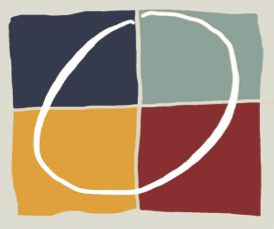
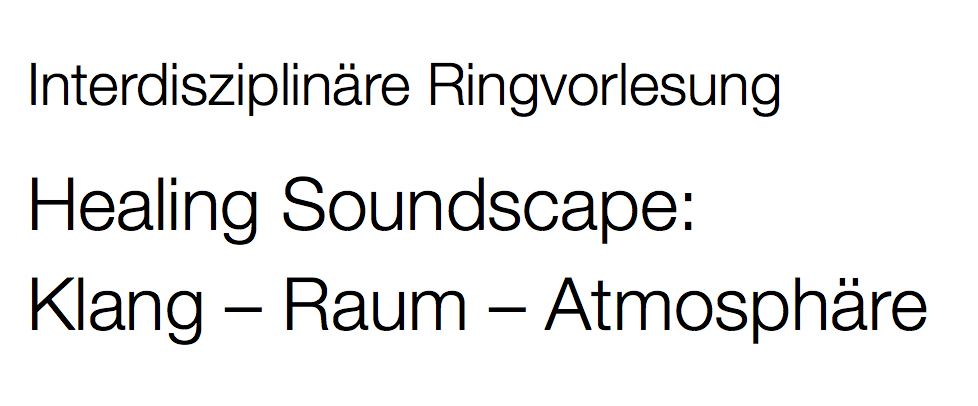
Robert Wechsler and myself were invited to give a lecture and performance at the Hochshule für Musik und Theater in Hamburg the 16th of November 2017 as a part of the lecture series Healing soundscape: Klang - Raum - Atmosphäre. The title of our lecture/performance was "MotionComposer – a movement-into-music device for persons of different abilities" – a demonstration/performance with audience participation.
The invitation actually resulted in a total of three lectures: One for masters students of multimedia composition and one open for a general public. The first lecture was more technical, focusing on both the tracking, musical mapping and the how it was implemented using Csound.
The second lecture was for a group of music therapy students and focused on the therapeutic applications of MotionComposer.
The third lecture was the public lecture which was a part of the lecture series. In it we argued how dance and music are closely related, and how that has been an impetus in the design and application of MotionComposer. It also gave us a chance to show artistic applications of the MotionComposer. A local dancer, Trinidad, improvised in the particles environment together with Robert Wechsler. I had brought with me some sounds that we had never tried before - they were recordings of manipulations of a mixer with closed feedback and some effects - and they turned out to work nicely. After the performance, the audience also got to try out several environments of the MotionComposer.
Here is an excerpt from the performance with a part of the performance where Trinidad has a solo. Unfortunately, it only has audio from the camera resulting in quite poor quality:
Video from the lecture/performance "MotionComposer ? a movement-into-music device for persons of different abilities? ? a demonstration/performance with audience participation featuring the dancer Trinidad.
Sound for photo exhibition: Ekko frå sjelas spegel
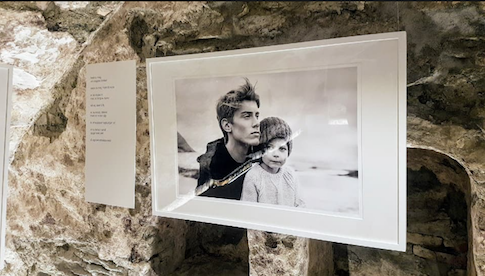
One of the images from the exhibition Ekko frå sjelas spegel with accompanying poem
In October 2017 I got the chance to work with Trondheim based photographer Siri Nordberg. She specializes in portraits and in her exhibition Ekko frå sjelas spegel (Echoes of the mirrors of the soul) she even combined portraits with poems she had written (later to be published in a book). It was exhibited in very special exhibition space: an arched cellar from the 19th century in the centre of Trondheim. Since an important theme in many of the texts were related to the sea and coastal landscapes, Nordberg wanted me to make a soundscape composition that could fit. I chose a recording I had made at Kvarøya in northern Norway, which featured a beautiful crescendo and decrescendo of waves and a boat passing in the distance. I treated it lightly to strengthen the inner dramaturgy of the composition. Listen to an excerpt here:
Tower Block - Post Mortem article

A few years back I wrote an article reflecting on different aspects of The Tower Block - Post Mortem project together with NTNU colleague Barbro Rønning. The article was originally intended to be a part of a book project on intermediality edited by Rosemary Klich, which was unfortunately not realized. A possibility then opened to publish the article in the International Journal of Aesthetics and Philosophy of Culture with a special issue called Nordic Time Zones: Art and Performance in the Northern Landscape, with Knut Ove Arntzen as invited editor and a special introduction by Shannon Jackson.
Abstract: This article discusses aspects of intermedial experiencing of the site-specific intermedial performance The Tower Block – Post Mortem and the preceding process of generating material for the performance through gathering and sharing memories from The Tower Block. The authors describe the gathering of memory material on the project's own blog, and how this process highlighted both properties of networked media and the phenomenology of remembrance. Subsequently, they discuss three different aspects of the performance, and how each of them relates to important issues in the discourse on intermediality in performance culture: 1) Intermedial elements in performance and their play with spatiality, temporality and their relationship to processes of remembrance; 2) Ritual and the transformative aesthetic of the performance and how it relates to the authenticity, and to interrelationships of the actual and the virtual; 3) Resonance and tension in trans-medial metaphors used in the performance.
The article can be downloaded here, and the whole issue on this link.
Crossadaptive seminar

The project Cross adaptive processing as musical intervention, led by colleague Øyvind Brandtsegg at NTNU, arranged a two day seminar November 2 and 3 2017 at the Department of Music, NTNU in Trondheim. The seminar featured a list of international participants in addition to colleagues from NTNU and The Norwegian Academy of Music (NMH): Miller Puckette, Simon Emmerson, Josh Reiss, Victor Lazzarini, Gary Bromham and Marije Baalman. The seminar featured academic presentations, panels and performances, and is well documented in video and slides at the project web site. My contribution was a presentation entitled Documentation in the Crossadaptive project, and focused on the use of video as a tool for documentation and reflection. The slides for the presentation can be downloaded here, and this link features a video of the talk.
Musikkteknologidagene (Music Technology Days)
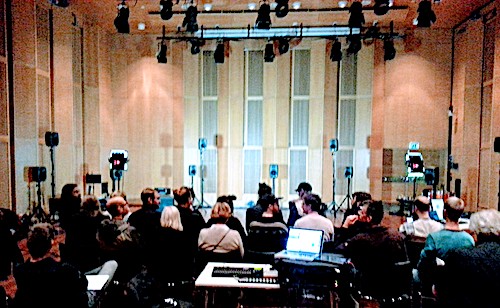
Musikkteknologidagene (Music Technology Days) is the meeting point of the music technology field in Norway, and in October 9-11 2017 it was hosted by the Norwegian Academy of Music (NMH) in Oslo. The programme consisted of academic presentations during the day and concerts in the evenings. I had two contributions, one academic and one artistic.
The academic contribution was with NTNU colleague Sigurd Saue, and was entitled Some Experiences from the project Sound - Space - Movement. The presentation featured a discussion of different aspects of the project with the same name, including motion tracking, body movement, movement->sound/spatialisation mapping, flexible reverberation with streaming convolution. An abstract in Norwegian can be found here.
The artistic presentation was an interactive dance performance featuring dancer and NTNU colleague Tone Pernille Østern taking place in Levinsalen at NMH with a 24-channel loudspeaker setup, combining a circle and an oval configuration. We were incredibly happy to be in the distinguished company of composers such as Åke Parmerud and Natasha Barrett, and the impro group Parallax, featuring spatialisation by Anders Tveit.
Movement and Computing Conference (MOCO)

The Fourth International Conference on Movement and Computing (MOCO 2017), was held at Goldsmiths University, London, June 2017. It featured highly regarded researchers from many different fields, ranging from computational neuroscience, affective computing and interactive dance. With less than 45% of submitted papers being accepted, me and MotionComposer colleague and leader, Robert Wechsler, were very happy to being in such a distinguished company of artists and researchers. Our contribution was a short paper entitled Issues and Strategies of Rhythmicality in MotionComposer and you can read it in the proceedings found here (choose Table of Contents and navigate to the title). Among other things the use of artificial intelligence and machine learning was a topic that was recurrently addressed, and Marc Coniglio spent a good portion of his keynote speech to speculate how this could affect the field in the near future.
MotionComposer workshop at Fraunhofer

In June 2017 the MotionComposer team was gathered for their annual workshop in Jena, Germany, at the much renowned research institution Fraunhofer and their devision for optics and precision engineering. Together with fellow MC-composers Ives Schachtschabel and Peter Breitenbach, I had the task of starting the development of sound environments for the MC version 3.0. We had a startup meeting with representatives for Fraunhofer, the organization Grenzenlos where we presented our visions and planned features for the different environments. After four days of intensive work our final presentation, with performers from Grenzenlos, also included a test of the sensor in development planned for the MotionComposer 3.0 and built by Fusion Systems, where parameters of the 2.0 Particles environment were controlled by the sensor. All in all the workshop gave a highly valuable impetus for developing the Particles environment further, including suggestions for new sound banks.
Radio interview about the Telharmonium

NRK (Norwegian Broadcasting) did a feature about one of the world's first electronic instruments, the Telharmonium, April 11 on the P1 channel. I was happy to be asked to contribute to the feature, and did a short interview where I talked about the instrument and did a short demo using a rough additive synthesis simulation. You can listen to the feature (in Norwegian) with the interview here. The Music technology student, Joachim Ose, was the journalist behind the feature.
Sound-Space-Movement. Research concert.
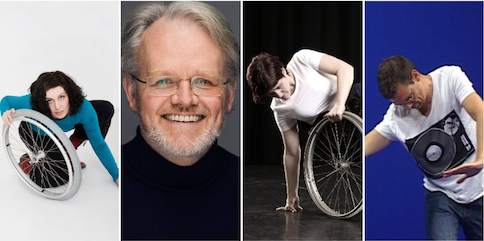
As a result of an initiative by Njål Ølnes, post.doc, the Department of Music, NTNU, has started a series of what we call Research Concerts. The series combines elements from research presentations for a non-scientific audience with the concert form, and aims at bringing together researchers/performers from different branches of the department.
The team behind the research concert entitled Sound-Space-Movement (Lyd-rom-bevegelse) included Tone Pernille Østern, Sigurd Saue, Elen Øyen and myself, and was presented at Dokkhuset March 23. The presentation was focused on how bodily interaction with MotionComposer could bring forth interesting movements and reflection from different perspectives. It featured an 8-channel version of the Particles environment of the MotionComposer that I developed in collaboration with Sigurd Saue.
I started off the event with a slightly humourous interactive performance of Richard Strauss' Also Sprach Zarathustra, with Tone copying my movements in the background (see a short excerpt here). I continued with presenting MotionComposer (MC) before I went into more details about my work with the Particles environment of MC, including a demonstration. I especially focused on mapping, demonstrating several possible mappings with data from the MC. Elen followed with an improvised Particles solo, playing with sounds of the Chinese opera singer, Feng Hau. After the performance Elen gave a highly personal talk about her experiences of becoming an dance improvisor using wheel chair. After doing a short Particles improvisation with trombone sounds he himself had played, Sigurd took a more scientific approach for the remainder of his presentation. He gave a very brief introduction to room acoustics, but also talked about convolution-based reverberation and multi-channel spatialization. Here, he demonstrated an orientation sensor he had coupled to a microcontroller and wireless transmitter. The sensor was used in conjunction with the MC-system to control sound spatialization (I had set up vbap8 in csound to do this), reverberation mix and distance. Tone rounded off the individual section with a highly expressive improvised solo using the Materials sound bank of Particles. This was followed by a performative talk where Tone combined verbal reflections around body, space and movement, with her own movements in the room.
Subsequently, the audience were invited to try to do their own improvisations with the MC-system, and several audience members took their chances and tried it out. The whole concert was rounded off by a Q&A session with all four presenters.
Panel at DHN2017 Conference

The 2nd Conference of the association of Digital Humanities in the Nordic Countries (DHN) was held at the University of Gothenburg March 14?16, 2017. Together with a group of researchers from several universities in the Nordic countries I participated in a panel entitled "The Nordic Hub of DARIAH-EU: A DH Ecosystem of Cross-Disciplinary Approaches". The abstract can be read here. The finished version of the panel paper was published in CEUR Workshop proceedings, and can be read here.
Open lecture at Rockheim
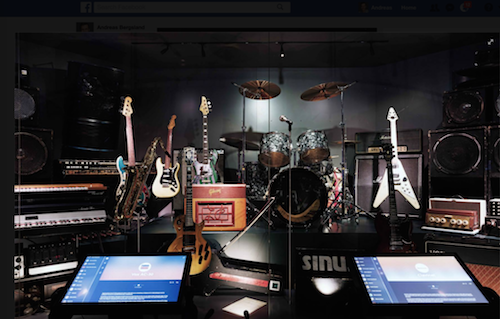
As a part of the collaboration between NTNU and Rockheim National Museum for Popular Music I held an open lecture the 16th of February entitled: "The Music Technology of Pop Music". The lecture was a part of the course Music Technology in Light of History, but was open to the general public. The lecture gave an introduction to instruments, sound media and technological tools for musical expression in the period 1950-1975. The slides from the presentation are available here.
